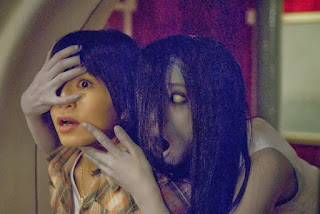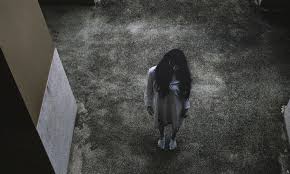The United State 's Witch Women
Witch hauntings and legends run rampant in America thanks to the early Puritan influence and the Witch Trials of the late 1600s. Salem Massachusetts where the famous 1692 and 1693 Trials took place is especially associated with ghostly hauntings associated with the victims, 5 of whom were male and 14 of whom were female. Now, it's a popular tourist spot where almost every building has a corresponding ghost legend to go along with it.
In the video above, Bridget Bishop, the first of the Salem Witch Trail's victims, is attached to a local business, Turner’s Seafood, as previously being her property. It was, as the video claims, her apple orchard. Bishop's attachment to the restaurant and her rumored, occasional haunting, is one of the many draws of the establishment in a town that thrives off of dark tourism.
Bishop is one of the most well known ghostly figures and victims of the Witch Trials. She is portrayed often as an outsider of the Salem community and the Purtian lifestyle; rumored to be a barfly who owned tavern herself, and promiscuous, having married three times. Many of the legends surrounding her paint her as amoral, loud in the way she dressed and presented herself, and a nonconformist when it came to the strict rules Puritans had for women. However, these are likely exaggerations. She did get married three times, this much is verifiable, due to being widowed twice. It's true as well that she was brought to court often for quarreling with her second husband, and was accused before the Trials of 1692, of potentially bewitching him to death; a charge that fell through due to lack of evidence. Due to her "criminal" history, however, of arguing with her husband, Sarah was not well-liked in Salem, Massachusettes, and ended up the most accused of all the victims to stand trial.
Bridget Bishop
While it is true that both men and women could be accused of witchcraft, and both men and women could be victims of it, there is a special emphasis and focus on gender, and in Bishop's case, her vulnerability to accusations likely stemmed from her not adhering to rigid gender roles.
The United States still has a fixation on witches in the media, although now they are handled quite differently. Over the last few years there has been a surge in witch-related media, such as the dark reboot of Sabrina the Teenage Witch, and movies such as The VVitch or Midsommnar. Though there are still elements of horror in all of these titles, now witches are treated with more nuance; becoming a witch is often associated with women taking control, or becoming empowered, in situations that would otherwise be dangerous to them. Sabrina is portrayed as a good-intentioned and capable girl navigating a dangerous world and doing what she has to do in order to survive and protect her loved ones. The VVitch and Midsommnar, though not as positive or straight forward, both depict girls in relatively helpless situations, both slightly persecuted or ostracized, having to make compromises to their morality in order to survive and thrive.
A




Comments
Post a Comment